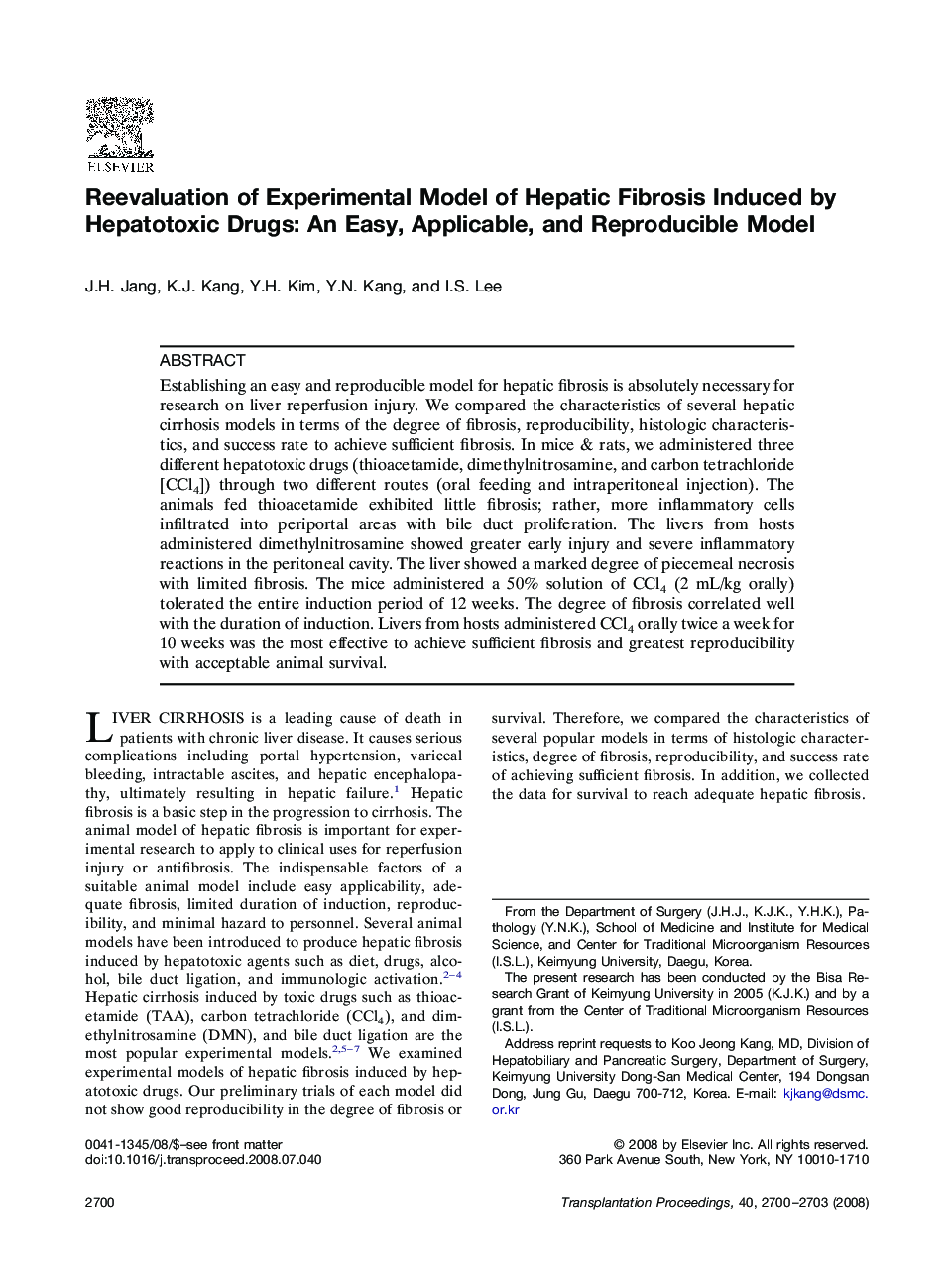| Article ID | Journal | Published Year | Pages | File Type |
|---|---|---|---|---|
| 4262035 | Transplantation Proceedings | 2008 | 4 Pages |
Establishing an easy and reproducible model for hepatic fibrosis is absolutely necessary for research on liver reperfusion injury. We compared the characteristics of several hepatic cirrhosis models in terms of the degree of fibrosis, reproducibility, histologic characteristics, and success rate to achieve sufficient fibrosis. In mice & rats, we administered three different hepatotoxic drugs (thioacetamide, dimethylnitrosamine, and carbon tetrachloride [CCl4]) through two different routes (oral feeding and intraperitoneal injection). The animals fed thioacetamide exhibited little fibrosis; rather, more inflammatory cells infiltrated into periportal areas with bile duct proliferation. The livers from hosts administered dimethylnitrosamine showed greater early injury and severe inflammatory reactions in the peritoneal cavity. The liver showed a marked degree of piecemeal necrosis with limited fibrosis. The mice administered a 50% solution of CCl4 (2 mL/kg orally) tolerated the entire induction period of 12 weeks. The degree of fibrosis correlated well with the duration of induction. Livers from hosts administered CCl4 orally twice a week for 10 weeks was the most effective to achieve sufficient fibrosis and greatest reproducibility with acceptable animal survival.
